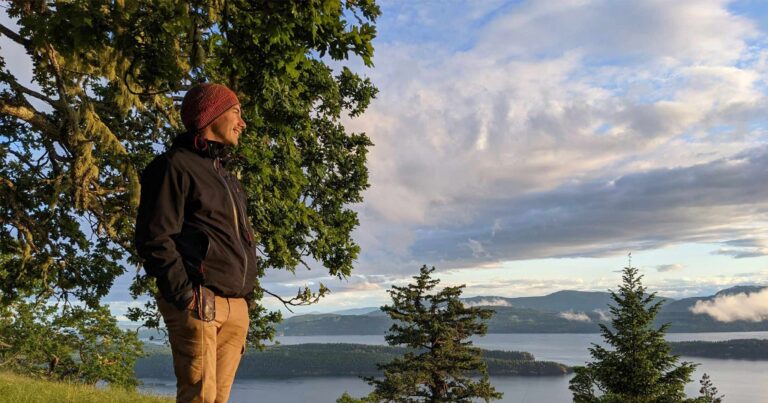History
In 2000, with a crucial donation of space by supportive private landowners, the Galiano Conservancy Association began creating its own Native Plant Nursery, the only one of its kind on Galiano. The physical beginnings were not without irony as it involved clearing a field infested with the viciously invasive exotic Himalayan blackberry (Rubus discolour) to create space for the nursery.
Purpose
Originally the Native Plant Nursery was established to support our education and restoration projects. Due in part to the success of our education efforts, there is an increasing demand from landowners and landscapers of Galiano for native vegetation. In response to this need, we are now branching out, making native plants available to the public to further our initiatives for an ecologically sound Galiano. Revenue from plant sales will subsidize the continued propagation and care of thousands of plants now rooted at the Native Plant Nursery. These plants will in turn be used for future restoration and education projects, in accordance with our non-profit principles.
Each year we raise hundreds of grasses, herbs, shrubs and trees for use in our forest, riparian, and Garry oak ecosystem restoration projects around the Island. The Nursery has also evolved into a wonderful education tool enabling us to raise awareness about native plants among local landowners as well as with school groups, youth and visitors to the Island.
Plants in the Nursery are raised from locally gathered seeds and cuttings and are grown naturally and organically. No herbicides or pesticides are used on the plants. Some of our stock has been salvaged from sites around the Island slated for clearing or development.
Operations
The Greenhouse
Constructed in 2010 with CRD Grant-in-aid funds, the greenhouse is used as a rodent-free space for germination and seedling care.
Seed Collection and Germination
From flower to fruit, we monitor Galiano’s native vegetation in order to harvest the seeds and berries at the peak time for optimal germination. Once sown, we leave the seeds to germinate through the natural process of winter stratification. The majority of our seedlings peek through the soil in spring, grow through the summer, and are ready to be transplanted the following spring.
Cuttings
Propagation chambers are used to facilitate the growth of cuttings taken from certain species of local flora, such as Indian plum (Oemleria cerasiformis), red-flowering currant (Ribes sanguineum), and red elderberry (Sambucus racemosa). After 3 – 6 months in the propagation chamber, root development is sufficient for cuttings to be transplanted.
Salvage
Native plants are salvaged from sites scheduled for development or clearing. Once plants are gathered from the site, they are transported to the nursery and transplanted into pots. After 3 months, they are ready to be used for sales, restoration or education projects.


